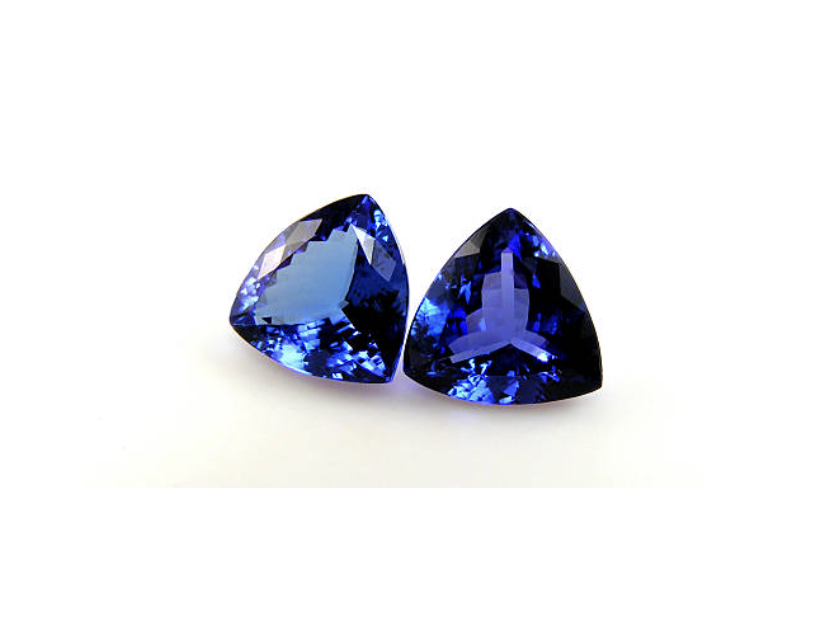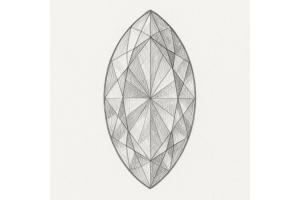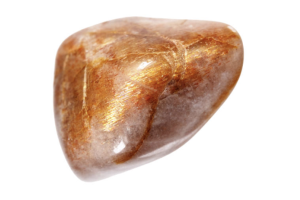USD
/
USD
/
Shipping to:
Currency:
Iolite vs Tanzanite: What’s the Difference Between These Stunning Gemstones?
When it comes to choosing between iolite and tanzanite, many jewelry lovers find themselves unsure.
Both gemstones showcase stunning blue and violet hues, making them popular options for all kinds of fine jewelry.
But even though they may look somewhat alike, iolite and tanzanite are very different in terms of their origin, composition, durability, and overall value.
Let’s break it all down so you can decide which gemstone is right for you.
Origins and Discovery
Iolite has a fascinating history that stretches back centuries.
Legend has it that Viking navigators used thin slices of iolite as a polarizing filter to help locate the sun on cloudy days.
Today, it’s primarily mined in places like India, Sri Lanka, Brazil, and Madagascar.
Tanzanite, on the other hand, was only discovered in the 1960s.
It comes from just one place in the world—near Mount Kilimanjaro in Tanzania—which is part of what makes it so rare and coveted.
Color Variations and Pleochroism
Both iolite and tanzanite are pleochroic, meaning they display different colors when viewed from different angles.
Iolite usually ranges from violet-blue to grayish-blue and may even appear colorless depending on the angle.
Tanzanite can shift between rich blues, violets, and even hints of burgundy—especially after heat treatment, which is commonly used to bring out its vibrant hues.
If you’re drawn to these kinds of tones, check out gemstone engagement rings to explore more styles.
Chemical Composition and Hardness
Understanding the mineral structure of these stones is key if you’re planning to wear them often.
Iolite is a magnesium aluminum silicate and measures 7 to 7.5 on the Mohs hardness scale.
That gives it decent scratch resistance, making it a good choice for daily wear.
Tanzanite is part of the zoisite mineral family and has a hardness rating between 6 and 7, which makes it a bit more delicate by comparison.
If you’re weighing up different gemstone options, take a look at this helpful guide on choosing between gemstones and lab-grown diamonds.
Durability and Care
For everyday jewelry, durability matters.
Iolite is strong enough for rings and pendants you plan to wear frequently, though you should still protect it from hard knocks.
Tanzanite is better suited for occasional wear or for jewelry with protective settings to avoid chipping or scratching.
For long-lasting designs, you might want to check out diamond wedding rings that offer durability and timeless appeal.
Market Value and Rarity
Iolite is relatively abundant and often more affordable than many other colored gemstones.
It’s a great choice if you love that violet-blue look but want to stick to a budget.
Tanzanite, being sourced from just one location on Earth, is far rarer and usually more expensive.
This makes it not only a beautiful choice but also a potentially valuable one over time.
If you’re into something a little different, non-traditional engagement rings featuring tanzanite and other unique gems are worth exploring.
Metaphysical Properties and Symbolism
Both stones are celebrated for their spiritual significance.
Iolite is known as the "vision stone," thought to stimulate creativity, inner clarity, and intuition.
Tanzanite is linked with transformation, higher consciousness, and emotional healing.
Whether you believe in gemstone meanings or just love their look, both stones have rich symbolic value.
Jewelry Design Considerations
Iolite is durable enough for a variety of settings, and its affordability means it can be used in both statement and minimalist styles.
Tanzanite tends to appear in more luxurious, high-end designs—especially those that offer extra protection like bezel or halo settings.
To see how these stones come to life in real designs, take a look at gemstone rings ideal for gifting or self-treats.
Frequently Asked Questions
How can I tell the difference between iolite and tanzanite?
While both stones have blue and violet tones, tanzanite tends to be more vibrant, while iolite has cooler or more muted shades. Tanzanite may also show flashes of burgundy in certain lighting, whereas iolite can appear gray or even colorless from some angles.
Is tanzanite a good choice for an engagement ring?
It can be, but due to its softer nature, you’ll want a setting that protects the stone. It’s best for people who don’t plan to wear the ring 24/7 or who are okay with a little extra care. If you're going that route, explore non-traditional engagement rings for more unique ideas.
Is iolite suitable for daily wear?
Yes, iolite has enough hardness for everyday use, but like all gemstones, it still needs a little care. Avoid dropping or hitting it against hard surfaces.
Why is tanzanite more expensive?
Tanzanite is mined in only one place on Earth, which means it’s naturally rare. Its vivid color, limited supply, and growing popularity all contribute to its higher price tag.
Do these gemstones require special care?
Both stones should be cleaned gently with warm, soapy water. Avoid steam cleaners or harsh chemicals, and store them away from harder stones to prevent scratching.
Curious about how gemstones form and what makes each one unique? Check out how gemstones and diamonds are formed for a fascinating deep dive.








